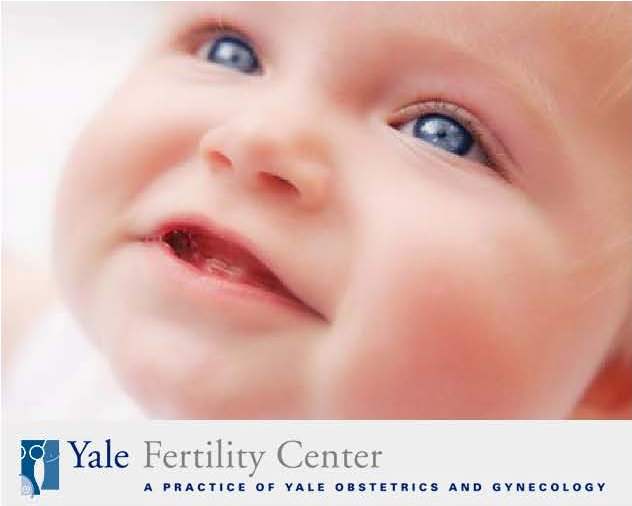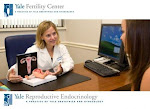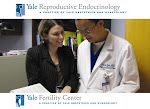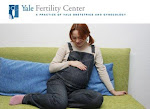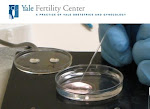This article that appeared in American Medical News on February 15, 2009 written by Kevin B. O'Reilly featured commentary from Pasquale Patrizio. MD, MBE, HCLD, Yale Fertility Center Director.
What began in late January as a feel-good story of a California medical team's Herculean efforts to deliver octuplets after a 31-week pregnancy quickly morphed into a controversy over the medical ethics of fertility practices.
The octuplets' mother, 33-year-old Nadya Suleman, said in an interview on NBC's "Today" that her physician transferred six embryos and two split. Suleman is single, unemployed and has six other young children. All were conceived through in vitro fertilization at the same clinic, she said. For each pregnancy, her doctor transferred six embryos, Suleman said.
If that is true, the physician's actions went well beyond American Society for Reproductive Medicine guidelines, society president R. Dale McClure, MD, said in a statement. The Medical Board of California is investigating, and the ASRM has offered to aid the inquiry. The AMA referred requests for comment to the ASRM.
"What was done is clearly irresponsible, clearly unethical, and it placed the life and health of the mother as well as the fetuses at great risk," said Samuel H. Wood, MD, PhD, a La Jolla, Calif., reproductive endocrinologist. "It's simply the wrong thing to do."
For a woman younger than 35 with a previous successful IVF cycle, the ASRM recommends transferring one embryo -- two at most. The society says pregnancies with four fetuses or more pose huge risks, including a 95% chance of pre-term labor and delivery, and a greater than 60% chance of preeclampsia. One in 10 such pregnancies results in gestational diabetes mellitus.
Pasquale Patrizio, MD, director of the Yale Fertility Center in Connecticut, said he would not have transferred so many embryos in a patient "for any reason. I don't understand why such a decision was made. No matter how much a patient may insist on a transfer of such a large number of embryos, it is out of the question and the request should not be honored at all."
Suleman, who said she has occluded fallopian tubes, told "Today" she dreamed of having a "huge family" and her goal with this pregnancy was to have one more child. She refused to selectively reduce the embryos when she learned six had been implanted successfully.
As of early February, the eight low-birth-weight babies were being tube fed donated pasteurized breast milk and monitored in the Kaiser Permanente Medical Center in Bellflower, Calif., where they were born. The hospital said the babies were expected to remain for several more weeks.
Regulation the answer?
The fertility practice Suleman named in her interview, West Coast IVF Clinic Inc. in Beverly Hills, Calif., is a member of the Society for Assisted Reproductive Technology. SART is an ASRM affiliate that represents more than 85% of U.S. fertility clinics and describes itself as a "governmental watchdog for ART" with quality-assurance expertise.
SART has contacted the clinic's medical director, Michael M. Kamrava, MD,to learn more about the medical circumstances of the case before taking any action, which could include revoking the clinic's society membership. Dr. Kamrava, an ob-gyn who was shown treating Suleman in a 2006 Los Angeles TV news show, declined requests from AMNews for an interview.
The Suleman case shows the fertility industry's self-regulation is insufficient, said Debora L. Spar, PhD, author of The Baby Business: How Money, Science, and Politics Drive the Commerce of Conception, which examined the market for reproductive technology. She said government should set rules on how many embryos can be transferred.
"Most people are agreeing this was an extreme case," Spar said. "That is exactly what regulation is best suited for. It defines the extreme and unacceptable behavior. Even if you took the ASRM guidelines, I think what this case shows is that even reasonable guidelines are not necessarily followed by unreasonable practitioners, and it is those unreasonable practitioners that you have to worry about."
The California medical board's decision to investigate may not prevent similar cases, Spar said. "We don't want regulation after the fact. We want regulation beforehand."
Fertility doctors said the proportion of high-order multiple births has dropped, thanks to better methods of culturing embryos and ASRM guidelines on transfers. The percentage of IVF cycles resulting in triplets or more fell 69%, to 4.3%, from 1997 to 2005, the last year for which data are available from SART and the Centers for Disease Control and Prevention.
"This particular case is a big problem, but I don't think we have a big problem generally," said James A. Grifo, MD, PhD, program director of the New York University Fertility Center. He said regulation could have unintended consequences, contending that a 1992 law requiring the CDC to publicly track clinics' success rates perversely encouraged physicians to increase the number of embryos they transferred to improve the odds.
"We passed the guidelines and made recommendations for what doctors should do, adjusting for the fact that not all patients are the same," said Dr. Grifo, a past president of SART. "Medicine is not formulaic. If it were, then why do we need doctors? We should just go to a computer."
Screening patients
Others said the case -- Suleman now is the sole parent to 14 children younger than 8 -- highlighted the need for more screening of prospective parents seeking reproductive technology services.
"I would like to see a mandatory psychological evaluation," said Arthur L. Caplan, PhD, director of the University of Pennsylvania Center for Bioethics. Caplan noted that such screening is standard for living organ donors and patients seeking bariatric surgery. "We need to look at what steps we can take to ensure they will be competent parents."
The ASRM published guidelines in 2004 saying fertility clinics could "withhold services from prospective patients on the basis of well-substantiated judgments that those patients will be unable to provide or have others provide adequate child rearing for offspring." The guidelines do not call for routine screening or home studies.
Fertility specialist Dr. Wood said he has referred a number of prospective parents for psychological counseling. At the same time, some doctors fear trampling on their patients' autonomy.
"I don't feel comfortable being in a position to tell a couple, or a woman, 'You're not going to do any more, because you have enough kids,'" said Yale's Dr. Patrizio. "It's not morally correct because it's not my reproductive right; it's her reproductive right. If she wants to have a large family -- do it one at a time or, at the max, two at a time. But it's her choice."
Wednesday, February 18, 2009
Friday, February 13, 2009
The Octuplets Saga
Malleability and fragility of human ethics is exemplified in the recently unraveled octuplet saga. The community in general and reproductive endocrinologists in particular are striving to comprehend the circumstances that fostered the practitioner’s poor judgment, deviance from guiding principles of practice and above all, an utter disregard to the wellbeing of a clearly “vulnerable” patient and her family!
Disregard of the woman’s psychological wellbeing and social circumstances are unpardonable, and yet pale against the reckless act of transferring multiple (six!!) embryos in a young woman of proven fertility for whom selective embryo reduction was not an option. Not only were the subspecialty specific guidelines (The American Society for Reproductive Medicine Society for Assisted Reproductive Technology offer clear guidelines regarding the number of embryos to transfer in an ART cycle to ensure against undue risk of high order multiple pregnancies) ignored, but also dismissed was the essence of the Hippocratic oath! While detailed explanations may never be available for the case under study, a need for introspection is quite apparent. In a consumer driven society where service is expected, nay demanded for a fee, these events may very well reflect thoughtless compliance to a pressing customer’s demands.
In times when economic successes more than intellectual prowess or integrity may define progress, it is simplistic to expect the medical community to stay immune to social pressures and be self shepherded within practice “guidelines”. Indeed, in a society where irrational demands of a few may be met by an occasional, the case of octuplets following assisted reproductive technology identifies a need for moving beyond the realm of “guidelines” to incorporate “reasonable requisites” to ensure wellbeing of an emotionally vulnerable population, i.e. those coping with a spectrum of psychological, social and economic stresses that remain intrinsic to a diagnosis of infertility.
Disregard of the woman’s psychological wellbeing and social circumstances are unpardonable, and yet pale against the reckless act of transferring multiple (six!!) embryos in a young woman of proven fertility for whom selective embryo reduction was not an option. Not only were the subspecialty specific guidelines (The American Society for Reproductive Medicine Society for Assisted Reproductive Technology offer clear guidelines regarding the number of embryos to transfer in an ART cycle to ensure against undue risk of high order multiple pregnancies) ignored, but also dismissed was the essence of the Hippocratic oath! While detailed explanations may never be available for the case under study, a need for introspection is quite apparent. In a consumer driven society where service is expected, nay demanded for a fee, these events may very well reflect thoughtless compliance to a pressing customer’s demands.
In times when economic successes more than intellectual prowess or integrity may define progress, it is simplistic to expect the medical community to stay immune to social pressures and be self shepherded within practice “guidelines”. Indeed, in a society where irrational demands of a few may be met by an occasional, the case of octuplets following assisted reproductive technology identifies a need for moving beyond the realm of “guidelines” to incorporate “reasonable requisites” to ensure wellbeing of an emotionally vulnerable population, i.e. those coping with a spectrum of psychological, social and economic stresses that remain intrinsic to a diagnosis of infertility.
Subscribe to:
Posts (Atom)
